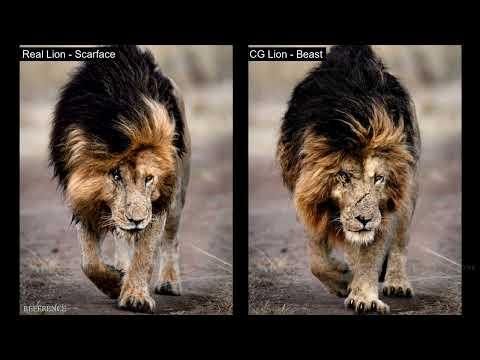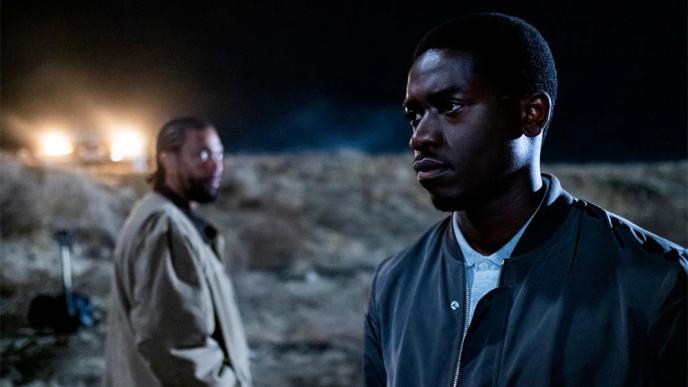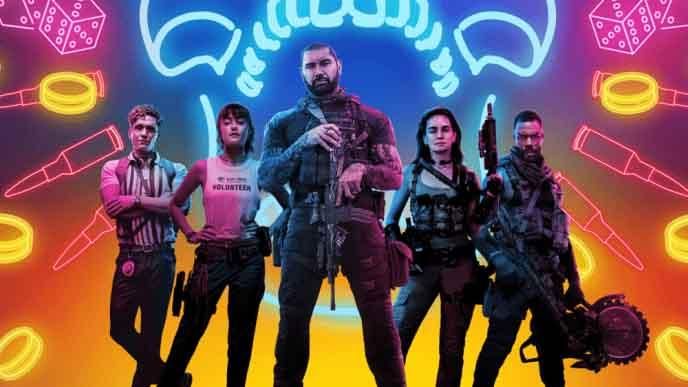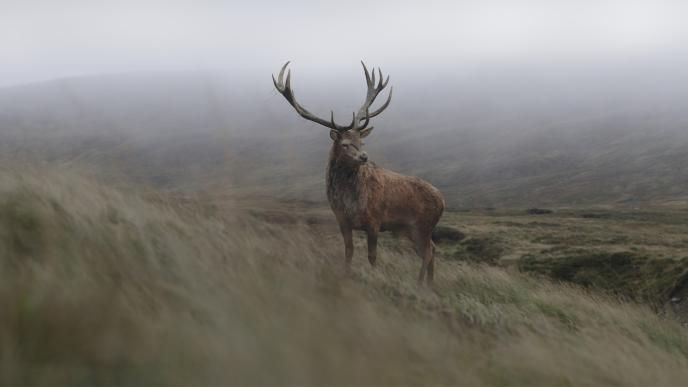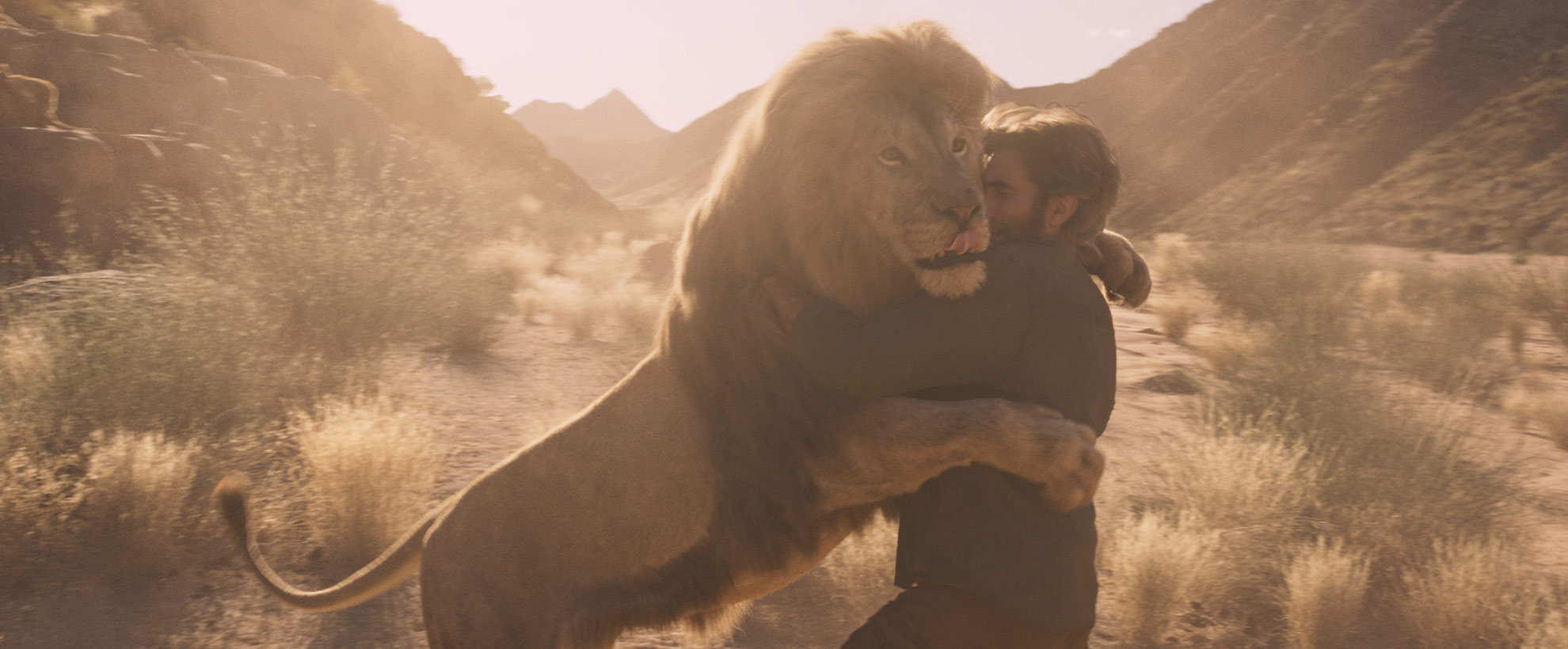
Beast
Framestore were thrilled to collaborate with Universal Studios on Baltasar Kormákur’s survival thriller, Beast.
Starring Idris Elba, the film transports audiences to South Africa, where recently widowed Dr. Nate Samuels (Elba) and his two teenage daughters visit a game reserve managed by an old family friend. The nostalgic trip soon turns into a nightmare as the family are pursued by a bloodthirsty lion. Led by VFX Supervisor Enrik Pavdeja, Framestore’s London studio, supported by their colleagues in Mumbai, delivered approximately 100,000 frames (typically 1,000 shots) for the film, with a delicate grade provided by Stefan Sonnenfeld at Company 3.
The feline antagonist started life in pre-production, where post-visualisation work was split between the animation team (led by Animation Supervisor Alvise Avati) and Framestore Pre-Production Services (led by Visualisation Supervisor Jon Allen). Both teams consulted a wealth of reference footage to establish how the animal should look and behave. “What makes the film so edge-of-your-seat tense is that it’s all grounded in reality. Part of you knows this must be a CG animal, but the way it moves and breathes feels tangible,” comments Visual Effects Supervisor Enrik Pavdeja. “We based the lion on a real one, named ScarFace. Our lion is bigger, but we kept identifying features such as the shape and colour of the mane, as well as his damaged eye.”
Man and Beast
The rogue lion pursues Elba and his family throughout the film, and so most of their scenes together take place with the cast in a car. In order to be able to capture the scenes in such a tight space, the crew built a stage car with removable roof and side panels, allowing the camera in. “The car was such a useful asset for us,” continues Pavdeja. “Most of the shots were hand-held steadicam work. Being able to adapt the stage car so that the camera could come through the window and see how the lion would interact with the set and the cast was really informative.”
One of the largest interactions between human and lion was a hug between one of the supplementary lions and Martin Battles (manager of the game reserve, played by Sharlto Copley). The team had to understand the physicality of the creature, its weight and musculature, and how that interacts with Copley’s embrace. “We watched a lot of reference footage to be able to grasp the sheer weight and power that these animals have,” says Pavdeja. “So when one of them bounds towards Martin and rears on its hind legs to hug him, we had to be able to convincingly portray that impact on Martin’s body.”
All the fine details of these interaction pieces were vital in order to sell the reality of the scene. From Copley’s character running his hand through the lion’s manes, to the way the lions pull slightly at his clothing. “In these instances, we went for a full digital replacement, rather than trying to composite the digital lion onto the plate footage,” explains Pavdeja. “Establishing the first lions we meet as photoreal creatures was so important - it sets the stage for our rogue lion to feel like a tangible threat to the audience, despite being larger than average.”
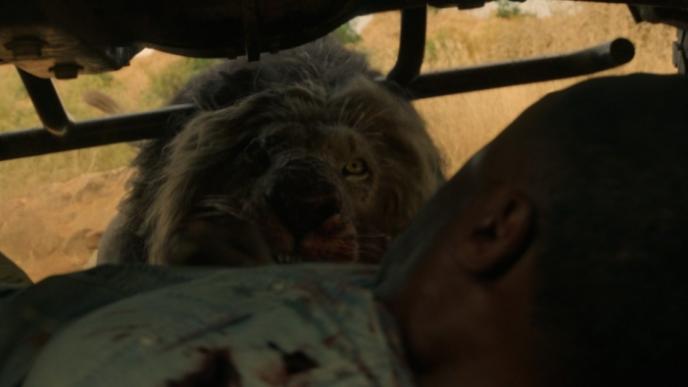
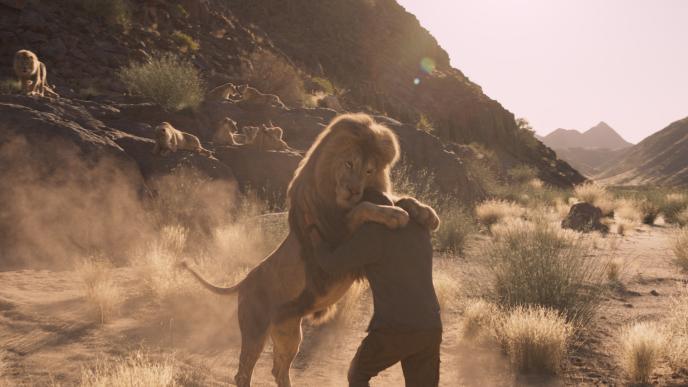
The Mane Event
“This lion interacts with the cast, with the environment, with a vehicle, and a lot of the shots are very close up to the camera,” continues Pavdeja, “so there’s really nowhere to hide in terms of building a photoreal digital creature.” The team conducted a shoot in South Africa, revisiting the locations from the film, to capture a vast library of reference footage. “We tried to match the environment, lenses, and lighting as closely to our plates as possible, so we could get a really solid reference to work from,” says Pavdeja. “We had a travelling lion, Mojo, with us on location, and essentially recreated the shots from the film to see how it would look with a real lion.”
Framestore’s effects team were put through their paces, with groom artists needing to replicate the shorter body fur, as well as the long, coarse mane. In pursuit of the Samuels family, the titular lion also had to interact with the game reserve setting. “Once we’d built out this fantastic mane, we then had to figure out what it looked like under a lot of different conditions,” explains Pavdeja.
In one edge-of-your-seat sequence, the villainous lion stalks Elba through a watering hole as his character gathers supplies for his family. The night-time setting adds a layer of tension, as the audience holds their breath and allows their eyes to adjust. Framestore’s talented artists established how the creature should move through the water, and how its mane and fur would look when wet, or muddy as the wet paws combine with the dust from the dirt roads.
As it continues to hunt the Samuels family, the lion encounters a burning vehicle, set alight in an act of sacrifice by family friend Martin Battles. The sudden explosion of the excess fuel burns the lion, adding another challenge for the FX team. “All the different facets of FX, groom, and creature have to come together in a realistic manner, to match the plates that we shot in South Africa,” explains Pavdeja.
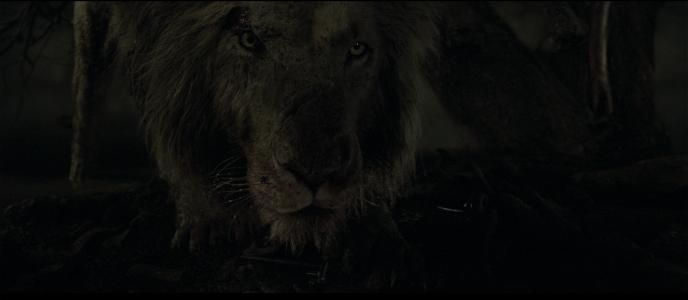
The Lion Fight
In the third act of the film, the hunt reaches its climax as Elba’s character fights the bloodthirsty lion, presenting a complex shoot for the Framestore team. “In the end, it was almost fully CG - we replaced the background and a lot of the environment” comments Pavdeja. “We had to convincingly rip Elba’s clothing, show blood and wounds, drool from the lion as it snarls.. The list goes on. It was a very challenging scene for us to get right.”
The shot begins with Elba under the car, so the team dug a slight dip to allow him space, and parked the real car on top. “We had a person in a motion capture suit as our stand-in lion, to help us get the framing of each shot, as well as giving Idris something real to react against,” says Pavdeja. “We used a digital double of Idris to make the scene as convincing as possible for the audience as he fights off the lion. In some shots, we were able to keep his face and just replace the body, but in other shots the dust and dirt kicked up by the fight meant we had to do a face replacement as well.”
In reality, the fight between man and lion would not be a long one, and so the artists were tasked with suspending the audience’s disbelief during the action-packed finale. “We tried to dial in that throughout the film, our lion had really taken some damage. He’s tired and bloody, even burnt in some places from the fire. Although this made him look even more menacing, it also suggests that Elba’s character might have a chance at survival,” explains Pavdeja. “So it keeps you hooked into the scene until the very end.”
